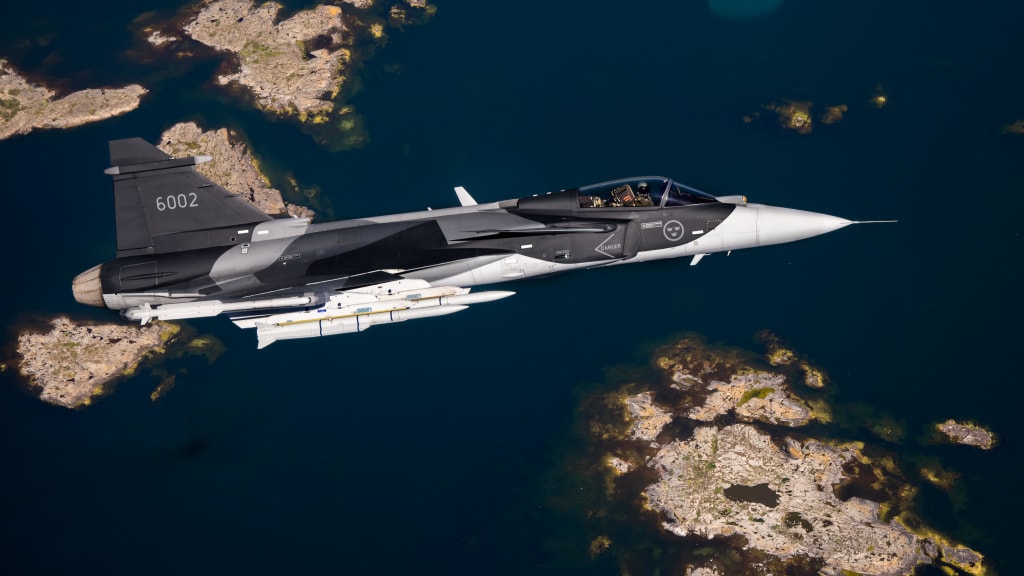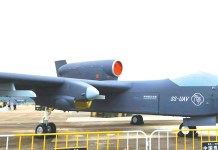Saab, on August 30, announced that it had recently carried out the first test firing of the advanced Meteor Beyond Visual Range Air-to-Air Missile (BVRAAM) on its all-new Gripen E with “a successful end-to-end result on the target.”
The company said the Meteor missile was fired from Gripen E over the Vidsel test range in northern Sweden at roughly 16,500 feet.
The Swedish aircraft manufacturer also shared a video from its official Twitter account that showed a successful Meteor live firing with Gripen E.
RELEASE: Successful Meteor Live Firing with Gripen E
Watch the firing in the video below and read more here: https://t.co/K56ASZFp1A pic.twitter.com/xy2sZaUOR5
— Saab (@Saab) August 30, 2022
Mikael Olsson, Head of Flight Test & Verification, Saab, described the latest test as an important milestone and stated, “It feels very good that we have now completed the first test firing with Meteor from Gripen E.”
He further noted that the meteor test “shows that the weapon capability of Gripen is at the absolute forefront.”
“The focus of the flight test program for Gripen E is on the continued development and testing of primarily the tactical systems, as well as integration of a variety of weapons,” Saab said.
A Meteor from MBDA is marketed as an unrivaled BVRAAM capable of operating in the most hostile settings. It can engage a broad spectrum of targets at unrivaled ranges, from fighter planes to small unmanned aerial vehicles and cruise missiles.

The Meteor, with a maximum range of around 108nm (200km), already offers beyond-visual-range missile capability to the Swedish Air Force’s existing Gripen C fighters.
The service also plans to put 60 new-generation E-model into service. The statement said that the Gripen E flight test program focuses on the continuous development and testing of the tactical systems and the integration of various weaponry, such as Meteor.
The Gripen E is a line of aircraft that includes two Gripen Next Generation (NG) program versions, the single-seat Gripen E and the two-seat Gripen F. But, Saab’s official designation for the series is simply Gripen E to refer to both aircraft.
According to the statement, the test’s success illustrates the close relationship between MBDA and Saab, which has grown stronger over many years of active cooperation.
“This trial also excellently shows off our joint ability to rapidly integrate weapon capabilities onto the all-new Gripen E,” says Jim Price, MBDA Vice President Europe.
Meteor – Beyond-Visual-Range Air-to-Air Missile (BVRAAM)
Meteor is an advanced, active radar-guided, beyond-visual-range air-to-air missile (BVRAAM).
The Meteor program is one of Europe’s most successful defense collaborations, bringing together the United Kingdom, France, Germany, Italy, Spain, and Sweden to develop this game-changing missile for air combat.
The Swedish aircraft manufacturer, Saab, is also a partner in the Meteor program in collaboration with prime contractor MBDA UK.
MBDA Systems manufactures the missile for six European nations, which can be installed on Eurofighter Typhoon, Saab Gripen, Dassault Rafale, and US-made Lockheed Martin’s F-35 fighter jet. It is hailed as one of the most powerful air-to-air missiles.
The missile is intended as a complete unit and needs no assembly or maintenance before loading. This approach lowers its overall life logistic support cost. The missile comes with improved kinematics characteristics and can simultaneously hit many targets of different types in practically any weather.
The Meteor measures 3.65 meters in length and 0.178 meters in diameter. The missile is compatible with AIM-120 type rail and ejects launcher systems.
A blast-fragmentation warhead, provided by TDW of Germany, is mounted on the Meteor missile. The warhead is an essential part of the missile’s structure. The missile incorporates proximity and impact fuses.
The Meteor BVRAAM is outfitted with a two-way data link that enables the launch platform to update the missile’s target information or re-target it while it is in flight. Information such as kinematic status can be transmitted via the data link.
The missile system is fitted with an active radar target seeker, which provides excellent dependability in target recognition, tracking, and classification. In addition, it is integrated with the Litef IMS inertial measurement system.
The missile is designed at speeds greater than Mach 4 and has a broad no-escape zone. The Meteor can engage moving targets such as planes, unmanned aerial vehicles (UAVs), and cruise missiles at the same time because of its improved tracking capabilities.
The Meteor missile is driven by a solid fuel variable flow ducted rocket (ramjet) supplied by Bayern-Chemie, helping to maintain steady high speeds.
The missile has an electronics and propulsion control unit (EPCU) that modifies the rocket’s air intake and duct covers depending on the target’s altitude and cruise speed.
- Contact the author at ashishmichel@gmail.com
- Follow EurAsian Times on Google News




